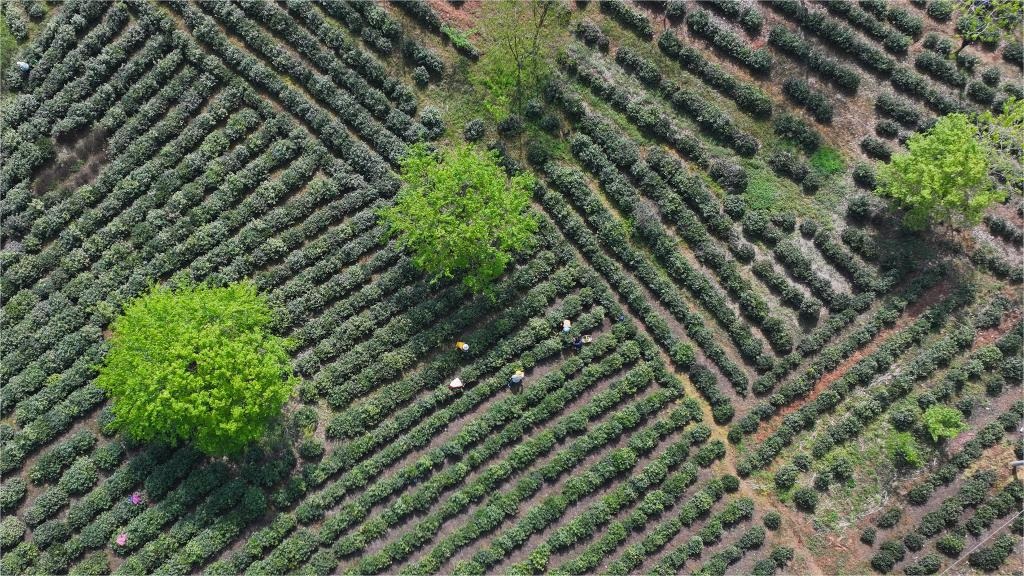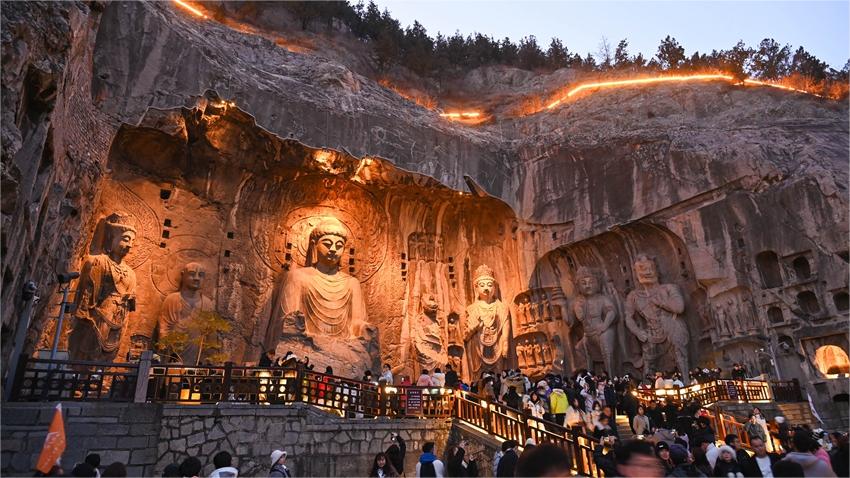Looking back at days of heroism, humiliation in "heroic county" on roof of world
LHASA, April 11 (Xinhua) -- Nyima Phuntsok, 83, donned a Tibetan hat and leaned on his cane as he made his way to an earthen wall that outlasts his age. He took off his hat, bowed his head, and observed a moment of silence.
The earthen wall, now part of the site of Qumigxung heroes monument, located east of the highway crossing Tuna Township under the city of Xigaze in southwest China's Xizang Autonomous Region, was built by the Tibetan soldiers 120 years ago to defend against the British invasion. It still bears the scars of the bullets from long ago.
Besides Nyima Phuntsok, there were numerous tourists paying tribute to the monument.
Phuntsok Dorje, Party secretary of Tuna, said the site receives dozens of visitors a day, including locals, students and tourists.
When Nyima Phuntsok was a child, elders in the village told stories of the past, which were also etched on a stone tablet at the site that recorded a fateful date in Tibetan, Chinese, and English: March 31, 1904.
On that day, over 1,400 Tibetan soldiers gathered to block the invading British force. After several failed attempts to break through, the British attacked Qumigxung under the pretext of negotiation, killing many Tibetan defenders.
The old man waved his cane emotionally when recalling childhood stories. "We lost the war because we were too weak," Nyima Phuntsok said. "How could improvised firearms stand a chance against strong weapons? I follow news about China and the world every day, seeing our country get stronger so that such a tragedy will never recur."
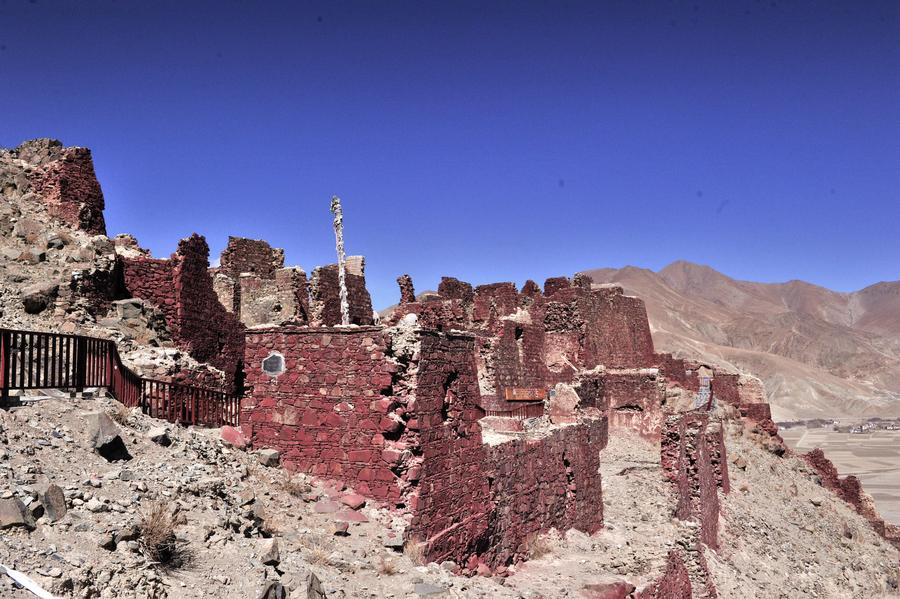
This photo taken on March 25, 2016 shows a view of Tsechen Monastery in Gyantse, Xigaze City, southwest China's Xizang Autonomous Region. (Xinhua/Jigme Dorje)
The region underwent peaceful liberation when Nyima Phuntsok was 10 and the democratic reform began when he turned 18. Over the decades, Xizang has seen rapid development. In 2023, the per capita income in Tuna was close to 20,000 yuan (about 2,765 U.S. dollars). Local people's lives have undergone tremendous changes.
Several sites commemorating past tragedies from Qumigxung to Gyantse County mark the route the British force took 120 years ago.
Monasteries along the route were ransacked at the time. According to the records written by then British war correspondent Edwund Candler, the wealth the force looted from the Tsechen Monastery in Gyantse "could only be carried away by 400 mules, including rare religious scriptures, statues, and many ritual implements."
After looting, British artillery fire destroyed nearly 60 halls for the Buddha, where the monks died heroically.
A stretch of ancient white castles now stands on Mt. Dzongri in Gyantse. The site gave Gyantse county its name, meaning "the peak of victory" in the Tibetan language.
Old photos are displayed in a memorial hall at the foot of the mountain, alongside a series of illustrations from the British "The Graphic" newspaper in 1904.
One caption describes how the British soldiers rigged up a shelter behind the gun. "Most of the Jong works (defense works) were within range of the gun, which invariably sent forth a spatter of bullets the moment a Tibetan showed himself," said the newspaper.
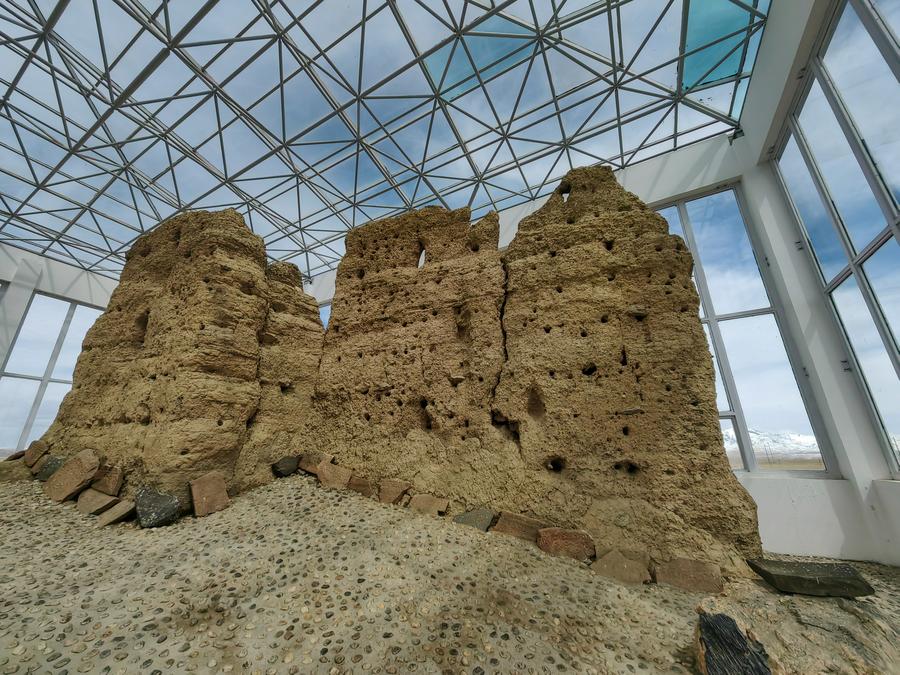
This photo taken on March 27, 2024 shows a view of the earthen wall with the scars of bullets at the site of Qumigxung heroes monument located east of the highway crossing Tuna Township, Xigaze City, southwest China's Xizang Autonomous Region. (Xinhua/Huang Yaoman)
"This year marks the 120th anniversary of the anti-British resistance in Gyantse," said Phurbu Tsering, a commentator at the memorial hall. "In June, the memorial hall will undergo renovation and expansion. More people will learn about this part of history."
The cultural tourism scenic area of the heroic and ancient county of Gyantse, a national 4A-level scenic spot, attracted more than 530,000 visitors in 2023.
During the British invasion in 1904, countless precious Tibetan artifacts and classic Tibetan texts were looted, eventually ending up in major British libraries and museums.
A search on the website of the Victoria and Albert Museum in London, one of the largest national museums in the UK, reveals that it holds 958 Xizang-related artifacts, 39 of which are marked as related to the "expedition to Tibet" by Francis Edward Younghusband, a British invader, from 1903 to 1904.
The museum's website describes a 16th-century gilt bronze statue of Buddha Shakyamuni as "it was reportedly collected during the British expedition to Lhasa in 1904."
On June 14, 2022, Erin L. Thompson, an associate professor at the John Jay College of Criminal Justice, City University of New York, said on social media that a statue of the Bodhisattva Avalokiteshvara in the Victoria and Albert Museum was looted by Younghusband in Xizang.
The museum was then forced to change the description of the exhibited artifacts, but many descriptions on the official website remain unaltered.
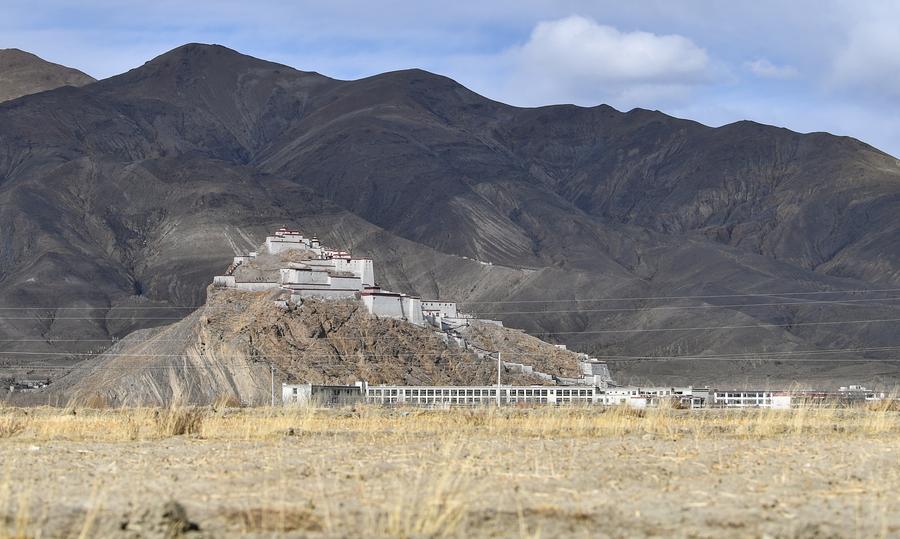
This photo taken on March 16, 2022 shows a view of ancient white castles on Mt. Dzongri in Gyantse, Xigaze City, southwest China's Xizang Autonomous Region. (Xinhua/Jigme Dorje)
Liang Junyan, a researcher at the institute of history of the China Tibetology Research Center, said half-jokingly: "You can't talk about weight with women, salary with men, or the origin of artifacts with British museums."
"If the artifacts were truly 'collected,' why did those ancient buildings in Gyantse that had stood for thousands of years turn into ruins?" said Phurbu Tsering.
Nowadays, when people look down from Mt. Dzongri, they can see the neatly arranged Tibetan-style bungalows across the entire county of Gyantse, as well as a central square surrounded by cars.
People are shuttling back and forth, shopping or chatting, enjoying their time. Some gather to chat at the pavilion in the middle of a lake at the foot of the mountain.
The heroic county, with an average altitude of over 4,000 meters, has developed rapidly over the past century. It is not only a transportation hub, but also a national historic and cultural county.
The year of wooden loong in the Tibetan calendar "reincarnates" from 120 years ago to this year, but it is probably the only thing the two years have in common.
Photos
Related Stories
Copyright © 2024 People's Daily Online. All Rights Reserved.








